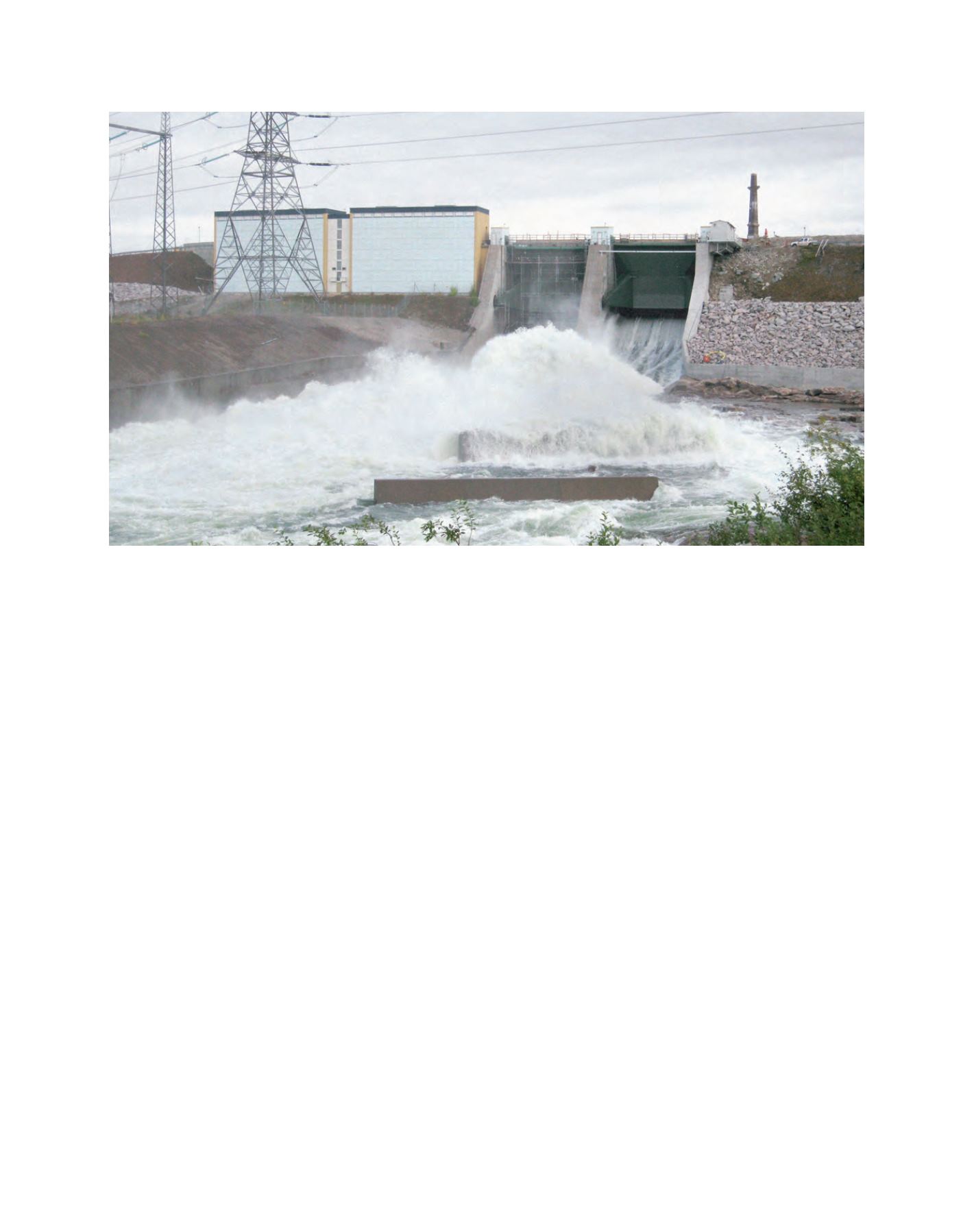

[
] 208
R
isk
G
overnance
and
M
anagement
into rivers where we are used to long calm periods during the extensive
cold winters. This affects both dam safety and the lives of those who live
along the rivers. Higher winter flows are at the same time beneficial to
the production of hydroelectric power.
The results so far also show that there is considerable uncertainty.
The difference between distinctive climate scenarios is large when it
comes to impacts on design floods. The floods can either increase or
decrease depending on how changing precipitation patterns interact
with new snowmelt conditions. It is therefore crucial to use more
than one climate scenario in this type of study and to take uncer-
tainty head-on, rather than shying away from it. Undoubtedly, there
is more than one answer to the question of how global warming will
affect the most extreme floods in a river system.
Climate uncertainty from a dam owner’s perspective
Understanding climate change and its impact is a challenge for the dam
owners. It requires a new way of thinking, where we can no longer
rely fully on past observations. It is also a challenge for the scien-
tists to explain why and how the target is moving and why the user
cannot expect to obtain one single and lasting answer. Communication
between the user and the scientist has thus become crucial. Swedish
research on the impact of climate change on design floods for dams is
therefore carefully monitored by a special committee with representa-
tives from the dam safety authority, the power industry, the mining
industry and the Swedish Meteorological and Hydrological Institute.
The task of the committee is to analyse and discuss new results and
to recommend how climate change should be accounted for in future
design studies. This will have a strong impact on the future design of
dams and also on physical planning along the shorelines in Sweden, as
the same flood criteria are used for flood risk mapping.
The prospect of a changing climate and the ensuing
uncertainty related to the validity of dam safety
criteria necessitates a new strategy in dam safety
assessments. It is more than ever before important to
be cautious and to add extra margins in the design.
This may not be so expensive compared to the costs
of doing this afterwards, when a project is completed.
Another key concept is flexibility. It is very likely
that future findings on climate change will force us
to reconsider some of our basis for design at a specific
site. Flexibility means that a project is designed so
that it can be modified technically in the future if this
is found necessary.
Decision under uncertainty is not a new problem
for the power industry. About 100 years ago the large
scale Swedish development of hydropower was started
by the decision to build the Porjus hydropower plant
in the roadless wilderness of the far north. Little was
known about river flow and even the mapping of the
water divides was incomplete. Nevertheless the engi-
neers of those days managed to develop hydropower
resources to the point where today they cover almost
half of the nation’s consumption of electricity. This
has, of course, required a strategy of successive adop-
tion to new conditions and data. Today the power
industry has to face another source of uncertainty; that
of climate change. This new situation is difficult in
many respects, but considering the challenges faced by
the engineers of the early 1900s, it has to be regarded
as manageable.
1
A special committee comprising the dam safety authority, the power industry, the mining industry and the SMHI, monitors the impact of climate change on design
floods. This will have a strong impact on the future design of dams in Sweden
Image: Sten Bergström, SMHI
















